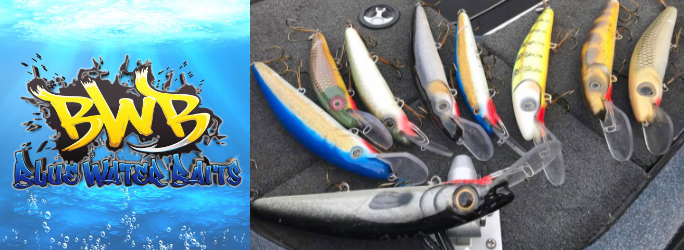IMPORTANT MESSAGE: Meeting Minutes, Club Chit-Chat, and Fishing Reports will be listed if you are a member of Chapter 50. If you are a member, and you cannot see the reports after logging in, please use the contact form by selecting the floating envelope icon located in the bottom-right corner. Include your name and your Chapter 50 membership number. We will verify, and grant you special rights to view all. Alternatively, you may email us at muskiesincpennjersey @ gmail .
11:43 pm
Fishing: Commission's revamping of state's muskie program places emphasis on quality over quantity
Sunday, January 01, 2006
By Deborah Weisberg
Howard Wagner of Fombell holds up the 53-inch Muskie he pulled Monday from the Allegheny River near Oil City.
Click photo for larger image.
--------------------------------------------------------------------------------
CATCH THIS
What:The Extreme Muskie Expo.
Where:The Sewall Center at Robert Morris University, Moon.
When: 2-9 p.m. Friday, 10 a.m.-7 p.m. Saturday; 10 a.m.-4 p.m. Sunday.
Cost: $8 Friday, $10 Saturday and Sunday. $15 for three-day pass. Children under 12 are free.
More information: Go to http://www.extrememusieexpo.com
--------------------------------------------------------------------------------
Fishing Notebook:
Great January Fly Sale slated
For the second time in four years, Howard Wagner has pulled a monster muskie from the wintry waters of the Allegheny River. The Fombell-based muskie guide released a 53-incher on a fire tiger Mentzer Heddon Vamp reproduction, wading north of Oil City late Monday afternoon.
Wagner's feat comes as the Pennsylvania Fish and Boat Commission is about to propose changes to its muskie program, effective in 2007 according to the Commission's fisheries management chief Leroy Young. He said new creel and size limits would emphasize quality over quantity.
"We'll probably recommend stocking fewer waters but putting bigger fish in," he said. "We'll be taking steps down the path of 'Can we reduce the number of waters to create a higher quality fishing experience?' "
The Fish and Boat Commission is fine-tuning its proposed new management plan, which will ultimately need board approval, as muskie anglers from across the region gather for the annual "Extreme Muskie Expo" Friday-Sunday at Robert Morris University in Moon. Besides dozens of vendors from throughout the United States and Canada, the event will feature "Muskie Hunter" magazine editor Jim Saric, as well as Kentucky's Crash Mullins, Buffalo-based Larry Jones and Wagner, Adam Andresky and other representatives of the Three Rivers Chapter of Muskies, Inc.
Though it no longer is sponsoring the expo, the Three Rivers Chapter of Muskies, Inc. has been helping the Fish and Boat Commission craft an upgraded muskie program, as part of the muskie focus group the Commission assembled last year.
The group's recommendations include cutting the creel limit in half to one muskie a day, raising the minimum creel size from the current 30 inches to at least 36 inches and designating trophy lakes with a 45-inch size minimum, according to Joe Houck, one of the club's representatives to the focus group.
Houck, a New Castle resident, served for 31 years as a Butler area waterways conservation officer and is retired. "The muskie limits are the same today as they were when I started with the commission," he said. "I'm excited that the commission is finally putting some focus on warm-water species because it only used to be trout, trout, trout."
Houck said the focus group, which includes representatives from the Penn-Jersey Muskies Inc. as well as independent anglers, originally suggested a 40-inch size minimum. "But we were told it might not fly with the commissioners, so we went down to 36," he said. "We also wanted the Commission to designate a trophy lake within 50 miles of every fisherman, but we doubt that'll happen."
Presque Isle Bay in Erie is the only water on this end of the state with a higher than usual, 40-inch size minimum.
Wagner, though he does not serve on the focus group, said all lakes should have at least a 38-inch minimum, and only if the daily harvest allowance goes to half.
"Nothing kills me more than seeing a 51-inch muskie and a 30-inch muskie laying on the ice together, for meat, which I've seen at Conneaut," he said. "At least one of those should have to go back."
He also would like the Commission to impose a 50-inch minimum on some lakes and catch and release restrictions on others, especially Conneaut Lake. The Commission hasn't yet indicated which, if any, lakes would be assigned special regulations.
Based on responses to an angler survey the Commission conducted on-line the past year, the most popular muskie waters in Western Pennsylvania are Lake Arthur, Pymatuning Reservoir, Tamarack Lake, Conneaut Lake, Woodcock Creek Lake, Lake Wilhelm, Tionesta Lake, Glendale Lake, Keystone Lake (Armstrong County), Edinboro Lake, Allegheny River (Kinzua Dam to Conewango Creek), Allegheny River (Tionesta Creek to Oil Creek), Sugar Lake, Canadohta Lake and the Shenango Reservoir.
The Commission's "catch per hour" rankings of the top 10 stocked muskie waters indicate that Tamarack is No. 1, followed by Lake Arthur, Keystone, Wilhelm, Conneaut, Pymatuning, Marsh Creek, Raystown and its tailwater, Cowanesque and Presque Isle Bay. It also singled out parts of the Monongahela and Allegheny rivers, and Woodcock, Sugar, Edinboro, Canadhota, Loyalhanna, Somerset, Shawnee and Donegal lakes.
Last year, the commission stocked almost 100,000 muskie and more than 79,300 tiger muskie in fewer than 100 lakes and river sections, statewide. More than 2,062 yearlings were planted in Canadohta, Conneaut, Edinboro, Sugar and Tionesta lakes.
Hatchery personnel are expected to man a booth at the expo this weekend and will receive $1,000 from the Three Rivers Chapter of Muskies, Inc. to pay for a minnow diet for their muskie, according to club president Harry Marfin.
The Commission's top warm water biologist, Bob Lorantes, has said studies indicate that hatchery muskie fed minnow diets appear to have a survival advantage after release into the wild.
2:21 am
March 6, 2005
 Offline
OfflineMatt- This is the EXACT section of the Allegheny that I fish. My first muskie ever came on a deep rocky section just North of Oil City. (It's about 6 miles down river from the cottage) We had never fished it before then and it looked great. When the water started to get shallow up I put down the muskie rod and threw a tube for smallies. Ironically, my first cast with a 6' light rod, 6lb mono and a 2.5" tube landed me a 31" muskie. Needless to say, I was the one who was really hooked that day.
There are some pigs in there. Biggest in the boat up to date is a 48"er in early spring. We have also had a couple of 5 fish days in November. I need to start planning some earlier and later season trips up there. That is proving itself over and over to be key. I'm all fired up now- can't wait until late March!
Great to see Chapter 50 quoted in such an important article. Kudos to the Jones' -Eric
2:28 am
June 23, 2004
 Offline
OfflineDitto on the kudos to Bob and Fred.
I'm a little disappointed that they are going to cave to the 36" limit, but we can't have it all the first time around.
<<<<><<<
Capt. Dieter Scheel http://www.BigDRiverGuide.com
3:09 pm
March 22, 2004
 Offline
OfflineHey,
Although we're all bretheren in this great sport, what's up with the Three Rivers this and the Three Rivers that and one small blurb about the Penn/Jersey chapter? I'd say, thanks to those who've taken it upon themselves to help out, that this chapter has spearheaded alot of the pro-active work with the commission. He says as he steps down off of his soapbox.
As far as the 36 inch proposed limit goes, wasn't it determined that that was the maximum size determined to have any positive impact on the the fishery. Any limit longer than that was shown not to have any further significance in improving the fishery. So I'm fine with that. Its the cutting of the creel limit that I think will have the greatest impact on the survival rate and the overall quantity of fish.
It is nice to hear of someone catching a 50+ inch fish within the state's borders and gives one the hope that we could see that kind of fish in our area within the next few years.
DL
DL
42
1 Guest(s)
 Log In
Log In Register
Register





